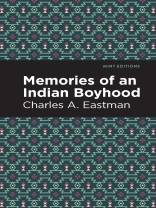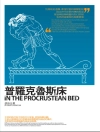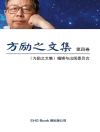Memories of an Indian Boyhood (1902) is a memoir by Charles Eastman. Recognized for his achievements as a pioneering Native American physician, Eastman was also a prolific writer whose personal stories, powerful meditations, and in-depth studies of indigenous culture continue to be read and appreciated today. In this memoir, his debut literary work, he recalls a youth marked by tragedy and perseverance that earned him the name Ohíye S’a, Dakota for “always wins.” “What boy would not be an Indian for a while when he thinks of the freest life in the world? This life was mine.” Although his birth and youth were marked by tragedy—the death of his mother, his separation from his father and siblings during the Dakota War of 1862—Eastman was able to experience the joys of Dakota Sioux life with his maternal grandmother and her family. “Every day there was a real hunt. There was real game. Occasionally there was a medicine dance away off in the woods where no one could disturb us […]” Immersed in the traditions of his people, Eastman—whose birthname was Hakadah—developed an identity grounded in the wisdom of his elders, yet open to the world outside. Nostalgic and full of gorgeous detail, Memories of an Indian Boyhood is a story of one boy’s youth that resonates with all who read it. This edition of Charles Eastman’s Memories of an Indian Boyhood is a classic work of Native American literature reimagined for modern readers.
Since our inception in 2020, Mint Editions has kept sustainability and innovation at the forefront of our mission. Each and every Mint Edition title gets a fresh, professionally typeset manuscript and a dazzling new cover, all while maintaining the integrity of the original book.
With thousands of titles in our collection, we aim to spotlight diverse public domain works to help them find modern audiences. Mint Editions celebrates a breadth of literary works, curated from both canonical and overlooked classics from writers around the globe.
เกี่ยวกับผู้แต่ง
Charles Eastman (1858-1939) was a Santee Dakota physician, lecturer, activist, and writer. Born Hakadah in Minnesota, he was the last of five children of Mary Nancy Eastman, a woman of mixed racial heritage who died shortly after giving birth. Separated from his father and siblings during the Dakota War of 1862, Eastman—who later earned the name Ohíye S’a—was raised by his maternal grandmother in North Dakota and Manitoba. Fifteen years later, he was reunited with his father and oldest brother—who were presumed dead—in South Dakota. At his father’s encouragement, Ohíye S’a converted to Christianity and took the name Charles Alexander Eastman, which he would use for the rest of his life. Educated at Dartmouth College, Eastman enrolled in Boston University’s medical program after graduating in 1897. He completed his medical degree in 1890, making him one of the first Native Americans to do so. Eastman then moved back to South Dakota, where he worked as a physician for the Bureau of Indian Affairs at the Pine Ridge and Crow Creek Reservations. During a period of economic hardship, he used his wife Elaine Goodale’s encouragement to write stories about his childhood, a few of which found publication in St. Nicholas Magazine. In 1902, he published Memories of an Indian Boyhood, a memoir about his life among the Dakota Sioux. In addition to his writing, Eastman maintained a private medical practice, helped establish the Boy Scouts of America, worked as a spokesman for the YMCA and Carlisle Indian Industrial School, and acted as an advisor to several Presidential administrations.












